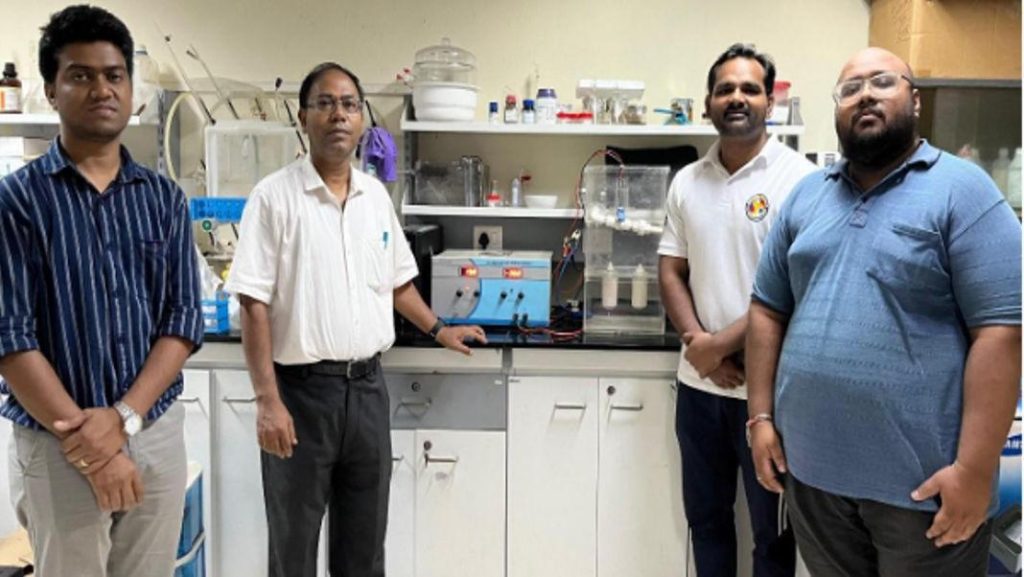
IIT Guwahati builds low-cost water purifier system
Access to clean drinking water is a fundamental human right, yet millions of people around the world still struggle to get their hands on safe and potable water. In India, the situation is particularly dire, with many rural areas and regions affected by fluoride contamination still lacking access to reliable water treatment systems. In a bid to address this pressing issue, researchers at IIT Guwahati have developed an innovative, low-cost water purifier system that can remove 94% iron and 89% fluoride from groundwater, making it an invaluable tool for improving access to clean drinking water in rural and fluoride-affected regions.
The system, which has been successfully tested in Assam, uses a four-stage process to treat water and can handle a daily capacity of 20,000 liters. What’s more impressive is that the entire unit costs a mere ₹20 per 1,000 liters, making it an affordable solution for communities that need it most.
The development of this innovative water treatment system is a significant breakthrough in the quest for clean drinking water. Iron and fluoride contamination are two of the most common water quality issues faced by rural communities, and the traditional methods of removal are often expensive and energy-intensive. The IIT Guwahati system, on the other hand, offers a cost-effective and sustainable solution that can be easily implemented in remote areas.
The four-stage process used by the system is a key factor in its success. The first stage involves coagulation and sedimentation, where impurities in the water are removed through chemical treatment and sedimentation. The second stage involves filtration, where the water is passed through a series of filters to remove any remaining impurities. The third stage involves disinfection, where the water is treated with disinfectants to kill any bacteria or other microorganisms. Finally, the fourth stage involves reverse osmosis, where the water is passed through a semi-permeable membrane to remove any remaining impurities.
The system’s ability to remove 94% iron and 89% fluoride from groundwater is a significant achievement, given the complexity of the process. Iron contamination can cause a range of health problems, including stomach cramps, diarrhea, and even organ damage, while fluoride contamination can cause tooth decay, skeletal fluorosis, and other health issues. By removing these impurities, the system not only provides clean drinking water but also helps to prevent a range of health problems.
The affordability of the system is another major advantage. Traditional water treatment systems can be expensive and energy-intensive, making them inaccessible to many rural communities. The IIT Guwahati system, on the other hand, is designed to be affordable and sustainable, making it an attractive solution for communities that need it most.
The successful testing of the system in Assam is a significant milestone in the development of this innovative technology. Assam is one of the states in India that is most affected by fluoride contamination, with many rural areas still lacking access to reliable water treatment systems. The testing of the system in this region has shown that it is effective in removing fluoride and iron impurities, making it a valuable tool for improving access to clean drinking water in rural areas.
The implications of this technology are far-reaching, with the potential to improve access to clean drinking water for millions of people around the world. In India, the system could be used to provide clean drinking water to rural communities that are still lacking access to reliable water treatment systems. In other parts of the world, the system could be used to provide clean drinking water to communities that are affected by water quality issues.
In conclusion, the IIT Guwahati low-cost water purifier system is a significant breakthrough in the quest for clean drinking water. The system’s ability to remove 94% iron and 89% fluoride from groundwater, its affordability, and its sustainability make it an invaluable tool for improving access to clean drinking water in rural and fluoride-affected regions. As the world continues to grapple with the challenges of access to clean drinking water, the development of this innovative technology is a major step forward.






